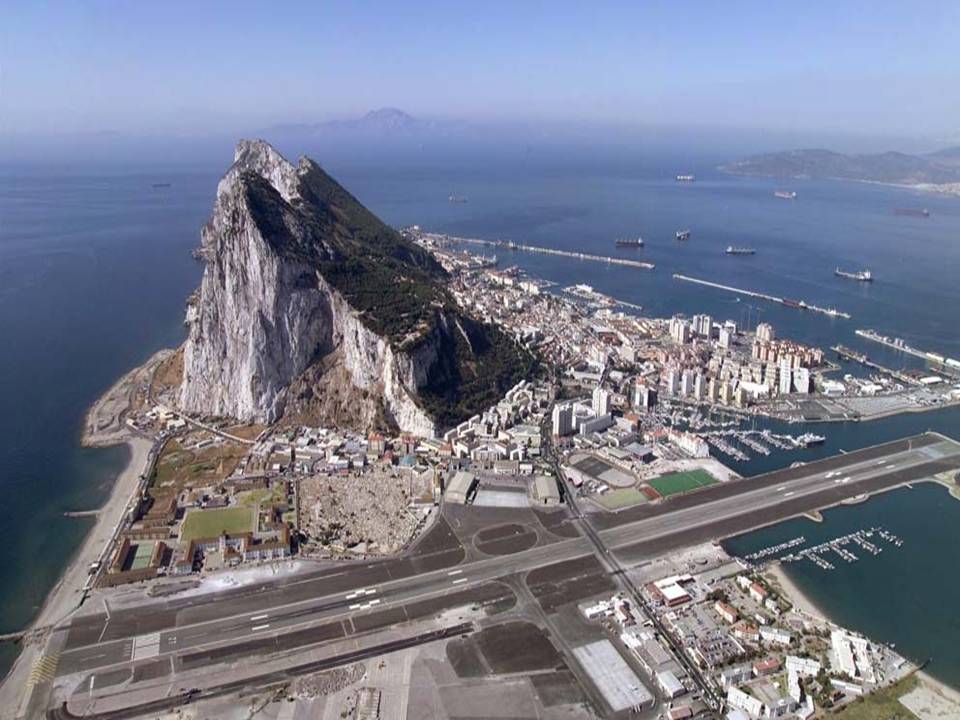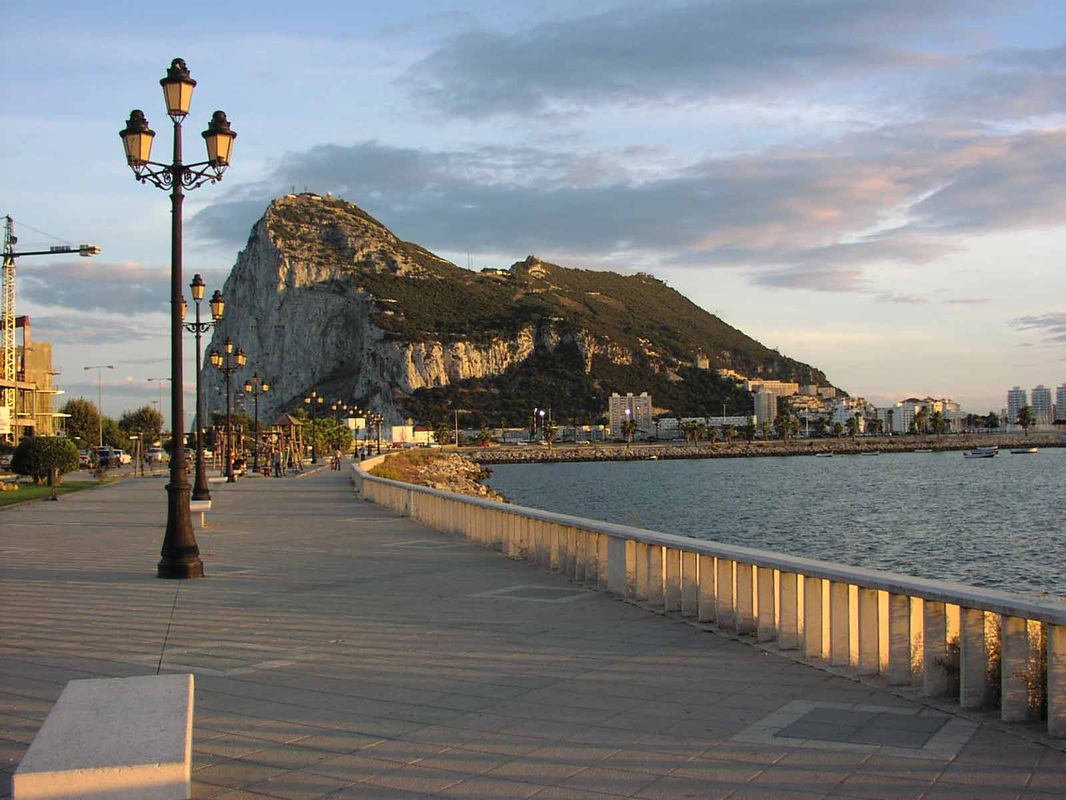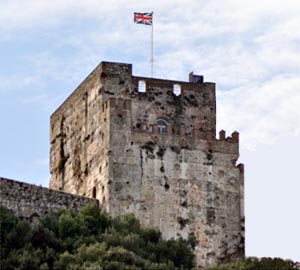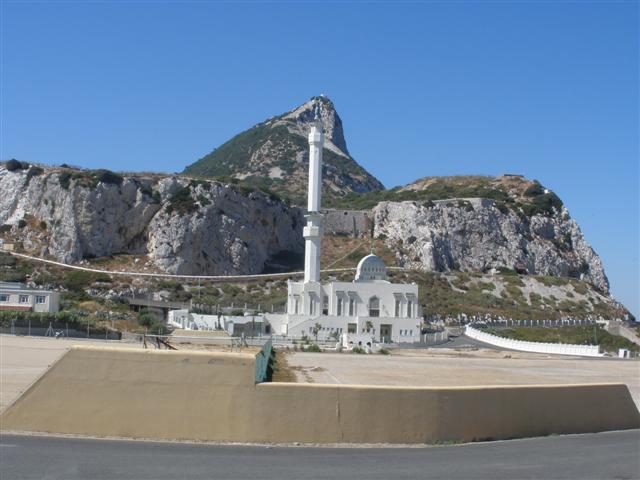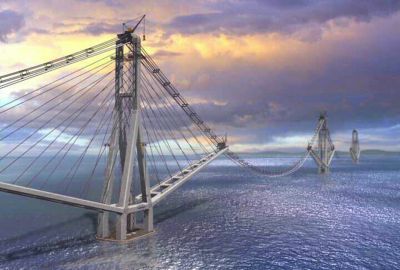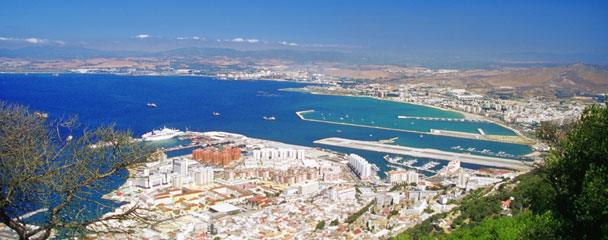PeopleMany European immigrants who came to the Rock over three hundred years ago converged into a racial and cultural fusion. The present generations of Gibraltarians are descendants of economic migrants who came to Gibraltar after the majority of the Spanish population left in 1704.
The replacements were Genoese, Maltese, and Portuguese people who formed the majority of the new population. Other groups include Sardinians, Sicilians and other Italians, French, Germans, Minorcans and the British. A constant feature of Gibraltar’s history is the immigration from Spain and intermarriage with the Spaniards from surrounding Spanish towns. This was until General Francisco Franco closed the border with Gibraltar, forcibly cutting off many Gibraltarians from their relatives on the Spanish side of the border. Even when the land frontier was opened by the Spanish socialist government, other restrictions remained in place. |
Located on the southern end of the Iberian Peninsula, Gibraltar is a self-governing British overseas territory at the entrance of the Mediterranean overlooking the Strait of Gibraltar. Sharing a land border with Spain to the north, the territory covers 2.642 sq mi (6.843 sq km). The site of a Royal Navy base, Gibraltar has been an important base for the British Armed Forces. The sovereignty of Gibraltar has been a major issue between the United Kingdom and Spain. Although ceded by Spain to Great Britain under the Treaty of Utrecht in 1713 in perpetuity, Spain continues to assert its claim to the territory and has been demanding for its return. However, the overwhelming majority of the population strongly opposes the Spanish claim, including any proposal of a shared sovereignty between Spain and the United Kingdom. It has been the position of the British Government to respect what the majority of the Gibraltarians may want regarding sovereignty. |
Geography
Gibraltar has two coastlines: the East Side, which contains the settlements of Sandy Bay and Catalan Bay, and the Westside, where the vast majority of the population lives. The Rock itself is made of limestone and is 1,397 feet high.
The climate is Mediterranean/Subtropical with mild winters and warm summers. The easterly wind known as the Levante coming from the Sahara Desert brings humid weather and warmer sea. The other prevailing wind, known as the Poniente, is westerly and brings fresher air in and colder sea.
Most of its upper area is covered by a nature reserve. Migrating birds are very common and Gibraltar is home to the only specimens of Barbary Partridges found on the European continent.
The climate is Mediterranean/Subtropical with mild winters and warm summers. The easterly wind known as the Levante coming from the Sahara Desert brings humid weather and warmer sea. The other prevailing wind, known as the Poniente, is westerly and brings fresher air in and colder sea.
Most of its upper area is covered by a nature reserve. Migrating birds are very common and Gibraltar is home to the only specimens of Barbary Partridges found on the European continent.
HistoryThe first inhabitants were the Phoenicians, around 950 BC. The Carthaginians and Romans also established semi-permanent settlements.
Gibraltar was briefly under the control of the Vandals after the collapse of the Roman Empire. It was conquered in AD 711 and remained under control of the Moors for 750 years. The Duke of Medina Sidonia reconquered it in 1462. Under the 1713 Treaty of Utrecht, which ended the war, Britain was awarded sovereignty over Gibraltar. Subsequently, Gibraltar became a key base for the Royal Navy. With the opening of the Suez Canal, its strategic value increased as it controlled the sea route between the UK and its colonies and dominions. During World War II, Gibraltar was transformed into a fortress by the British. Under the dictatorship of Franco, Spain renewed its claim to sovereignty over Gibraltar. In 1969, it was granted autonomy by the British Crown. Gibraltar remains an outstanding issue between Spain and United Kingdom. |
Famous Attraction
A large area of the upper rock has been designated as a nature reserve. The ongoing project is well underway to transform Gibraltar's famous public park, the Alameda Gardens, into a new botanical garden to rival the best in the world.
In spring and autumn, the Rock becomes a staging post for hundreds of thousands of migrating birds flying between their breeding grounds in Northern Europe and their wintering areas in tropical Africa.
In a den high on the Rock live Gibraltar's most famous residents, the Barbary Apes, the only wild primates in all Europe.
Gibraltar is home to a wealth of plant life - palms and jacaranda, lavender and jasmine, clematis, honeysuckle, geraniums and bougainvillea live side by side with many rarer species.
In the seas around Gibraltar, the diversity of life is just as great. Sail into the bay and, more often than not, your boat will be followed by flying fish and schools of leaping dolphin.
In spring and autumn, the Rock becomes a staging post for hundreds of thousands of migrating birds flying between their breeding grounds in Northern Europe and their wintering areas in tropical Africa.
In a den high on the Rock live Gibraltar's most famous residents, the Barbary Apes, the only wild primates in all Europe.
Gibraltar is home to a wealth of plant life - palms and jacaranda, lavender and jasmine, clematis, honeysuckle, geraniums and bougainvillea live side by side with many rarer species.
In the seas around Gibraltar, the diversity of life is just as great. Sail into the bay and, more often than not, your boat will be followed by flying fish and schools of leaping dolphin.
NightlifeThe Three Owls has three floors of games and entertainment offering spirits and mixer promotions every night and two hours on student nights. On the first floor is the Bottom Bar. It has one 8-ball table and three games machines. Hoots (2nd Floor) has two 8-ball tables and a games machine. The Nest (3rd Floor) has an American pool table and two games machines
Ocean Village, Gibraltar's newest marina, is an extension to Marina Bay. It is home to several new pubs and restaurants, including a Chinese and an Indian restaurant. The best night to go out is probably on a Friday evening from 11PM onwards. There are also Summer nights from 7PM on Tuesdays and Thursdays. The Lord Nelson on Casemates Square is one of the more popular pubs in Gibraltar. Take a walk down Main Street or Irish Town for plenty more action... Some other good venues include The Clipper, Star Bar, The Horseshoe Bar, The Underground and The Captains Cabin. |
Culture
The diverse culture of Gibraltar reflects Andalusian and British influences. However, the ethnic origins of most Gibraltarians are not confined to British or Andalusian ethnicities. Most ethnicities include Genoese, Maltese, Portuguese, and German. A handful of other Gibraltar residents are Jewish of Sephardic origin, North African, or Indians.
English is the language of government, commerce, education, and the media. Gibraltarians going on to higher education attend university in the UK.
There exists a small but interesting amount of literary writings by native Gibraltarians. The first prominent work of fiction was probably Héctor Licudi's 1929 novel Barbarita, written in Spanish. Several noteworthy anthologies of poetry were published throughout the 1940s and 1950s.
The music of Gibraltar is undergoing a renaissance with a multitude of local bands playing original material and covers. Local venues have begun accepting Gibraltarian bands and those from nearby Spain, resulting in a varied mix of live performances every weekend as well as on some weekday nights.
English is the language of government, commerce, education, and the media. Gibraltarians going on to higher education attend university in the UK.
There exists a small but interesting amount of literary writings by native Gibraltarians. The first prominent work of fiction was probably Héctor Licudi's 1929 novel Barbarita, written in Spanish. Several noteworthy anthologies of poetry were published throughout the 1940s and 1950s.
The music of Gibraltar is undergoing a renaissance with a multitude of local bands playing original material and covers. Local venues have begun accepting Gibraltarian bands and those from nearby Spain, resulting in a varied mix of live performances every weekend as well as on some weekday nights.
CuisineGibraltarian cuisine is the result of a long relationship between the Andalucian Spaniards and the British. In addition, it reflects the culinary traditions of many foreigners who made Gibraltar their home over the past three centuries.
The culinary influences include those from Malta, Genoa, Portugal and Andalusia. This marriage of tastes has given Gibraltar an eclectic mix of Mediterranean and British cuisine. Calentita, a baked bread-like dish made with chickpea flour, water, olive oil, salt and pepper, is considered Gibraltar's national dish. |
Qunar

